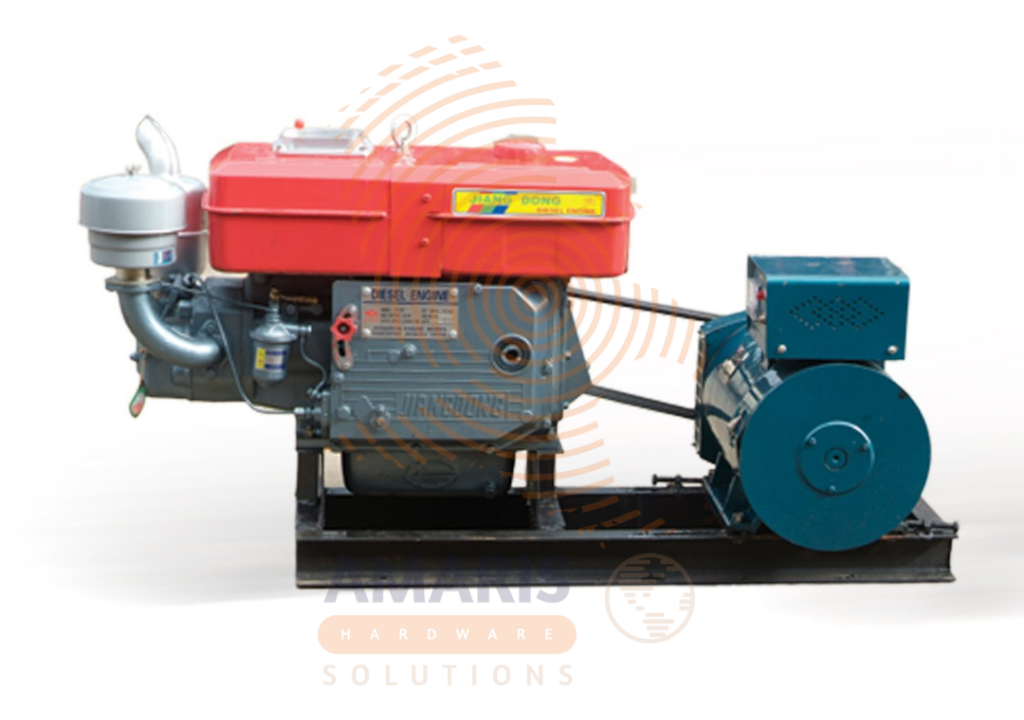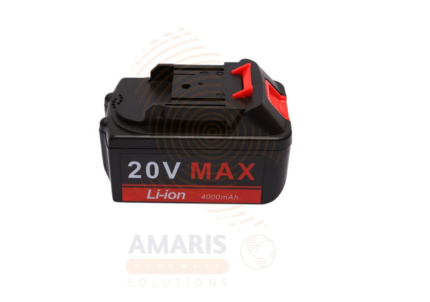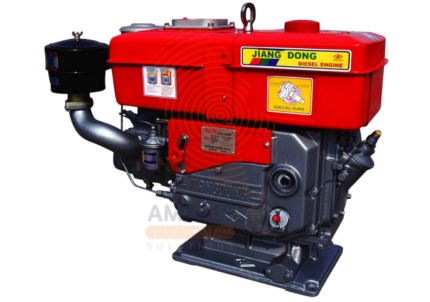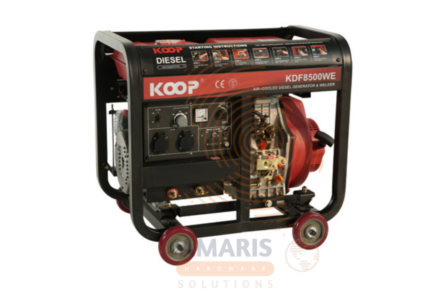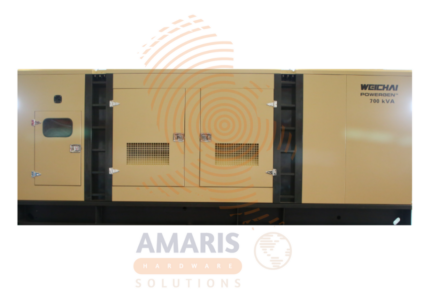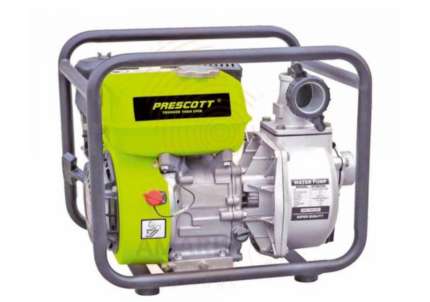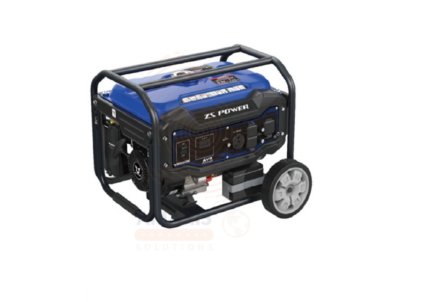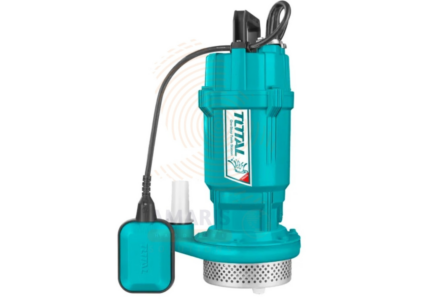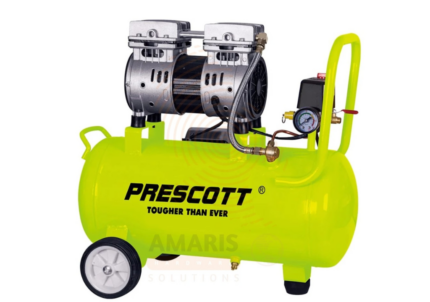Diesel Generator Set
WhatsApp Order
A diesel generator set (or diesel genset) is a complete power generation system that combines a diesel engine with an alternator to produce electricity. It is typically mounted on a steel frame with vibration isolators, fuel tank, control panel, and other accessories required for safe and efficient operation. Diesel generator sets are known for their fuel efficiency, long runtime, durability, and ability to handle heavy electrical loads, making them ideal for standby, prime, or continuous power supply. They are widely used across industrial, commercial, residential, agricultural, and emergency applications, and can range from small portable units to large-scale industrial powerhouses.
Description
Table of Contents
ToggleDiesel Generator Set
Uses
-
Standby Power for Commercial Buildings
-
Ensures uninterrupted power supply during grid outages in hospitals, offices, malls, and data centers.
-
Powers elevators, security systems, servers, and HVAC systems.
-
-
Industrial Operations
-
Provides continuous or backup power for factories, workshops, and manufacturing plants.
-
Supports large machinery and critical operations.
-
-
Construction Sites
-
Powers heavy tools and equipment in areas without access to the electrical grid.
-
Used for temporary lighting, cranes, concrete mixers, and more.
-
-
Remote and Off-Grid Locations
-
Delivers primary power in mining operations, oil and gas fields, and rural areas.
-
Supports remote telecom towers and base stations.
-
-
Agricultural Applications
-
Powers irrigation systems, water pumps, grain processing, and refrigeration units.
-
Useful in farms and greenhouses for maintaining production during outages.
-
-
Residential Backup Power
-
Keeps essential appliances running in homes during blackouts.
-
Ensures comfort by powering lights, refrigerators, sump pumps, and air conditioning.
-
-
Events and Temporary Installations
-
Supplies electricity for outdoor events, festivals, exhibitions, and field operations.
-
Easily transported and deployed for mobile power needs.
-
-
Disaster Relief and Emergency Response
-
Used by governments and NGOs to provide electricity in disaster-stricken areas.
-
Powers medical facilities, shelters, and communication hubs.
-
-
Telecommunication & IT
-
Ensures uninterrupted power supply to data centers, telecom towers, and control rooms.
-
Maintains connectivity during power outages.
-
-
Military and Field Operations
-
Provides off-grid power for field camps, communication systems, and mobile bases.
-
Built to withstand extreme conditions and continuous use.
SAFETY HANDLING PRECAUTIONS
Safety Precautions
-
Wear Protective Gear
-
Use hearing protection to reduce exposure to noise.
-
Wear safety goggles to protect eyes from sparks or debris.
-
Use gloves and steel-toed boots to prevent injuries from hot surfaces or falling objects.
-
-
Proper Installation
-
Install on a level, stable, and non-combustible surface.
-
Ensure adequate space for ventilation and access for maintenance.
-
-
Adequate Ventilation
-
Place the generator outdoors or in a ventilated room to avoid buildup of carbon monoxide.
-
Keep exhaust outlets clear of obstructions.
-
-
Avoid Carbon Monoxide Poisoning
-
Never run indoors or in enclosed areas.
-
Use CO detectors when installed near inhabited spaces.
-
-
Electrical Safety
-
Always use a transfer switch to prevent backfeeding into the utility grid.
-
Ground the generator properly to avoid electrical shock or fire.
-
-
Fuel Handling
-
Store diesel fuel in approved containers, away from ignition sources.
-
Refuel only when the engine is turned off and cooled down.
-
Clean up fuel spills immediately and dispose of waste properly.
-
-
Inspection and Maintenance
-
Regularly inspect for leaks, wear, and loose connections.
-
Follow the manufacturer’s service schedule for oil changes, filter replacements, and system checks.
-
-
Load Management
-
Never overload the generator beyond its rated capacity.
-
Use circuit breakers and overload protection devices.
-
-
Emergency Preparedness
-
Know how to shut down the generator in an emergency.
-
Keep fire extinguishers nearby and accessible.
-
Train all users on emergency procedures and safety protocols.
-
-
Read the Manual
-
Thoroughly read and follow all safety instructions in the user manual.
-
Ensure that only trained personnel operate or service the generator.
Related products
Big Battery Pro
A " Big Battery Pro" typically refers to a rechargeable lithium-ion battery with a nominal voltage of 20 volts. The nominal voltage represents the average voltage output over the majority of the battery's discharge cycle. It's important to note that the actual voltage during use may fluctuate within a specified range.
These batteries are commonly used to power various devices, including power tools, garden equipment, and other portable electronic devices. The "20V" designation is a standardized measure indicating the electrical potential of the battery, providing a general indication of its power output.
Keep in mind that when considering a 20V battery, it's essential to verify compatibility with the specific device or tool it is intended for. Additionally, different manufacturers may have variations in the actual voltage, capacity, and features of their 20V battery products. Checking the product documentation or contacting the manufacturer for detailed specifications is recommended for accurate information.
Diesel Engine
A diesel engine is a type of internal combustion engine that operates by compressing air to a high temperature and then injecting diesel fuel into the combustion chamber, where it ignites spontaneously. Known for its fuel efficiency, durability, and high torque output, diesel engines are widely used in automotive, industrial, agricultural, and construction applications. These engines can range from small single-cylinder types to large multi-cylinder units used in heavy-duty machinery and generators. Unlike gasoline engines, diesel engines do not require spark plugs, making them more robust and suitable for continuous and heavy workloads in demanding environments.
Diesel Generator (Open)
A Diesel Generator (Open) is a power-generating unit consisting of a diesel engine and alternator mounted on a frame, without a protective enclosure. Unlike enclosed generators, open generators are fully exposed, making them easier to access for maintenance and inspection. This design offers excellent cooling and heat dissipation but results in higher noise levels and vulnerability to weather conditions. Open diesel generators are commonly used in industrial and construction applications where sound insulation is not a priority, and where generators are placed in designated engine rooms or open environments. They come in a wide range of power outputs and are valued for their durability, long runtime, fuel efficiency, and capability to handle heavy electrical loads.
Diesel Genset(silent)
A Diesel Genset(silent) is a compact, enclosed power unit that combines a diesel engine and an alternator to produce electricity with significantly reduced noise levels. Designed with soundproof acoustic enclosures, vibration isolators, and mufflers, silent gensets are ideal for residential, commercial, and institutional applications where low noise pollution is critical. These units are used for standby, prime, or continuous power needs, offering fuel efficiency, reliability, and durability even in demanding environments. They are available in a range of power outputs and are engineered to meet stringent environmental and sound emission regulations.
Gasoline Water Pump
A Gasoline Water Pump with a 7.0 HP (horsepower) 208 CC (cubic centimeters) engine is a mechanical device designed to transfer water by utilizing a gasoline-powered internal combustion engine. The 7.0 HP rating indicates the power of the engine, while the 208 CC represents the engine displacement, reflecting the size and potential performance of the engine.
This type of water pump is commonly used for various applications, such as draining flooded areas, transferring water between locations, and providing water for irrigation. It typically features suction and discharge ports for connecting hoses or pipes, a fuel tank for gasoline storage, and a start mechanism, which can be either electric or manual.
Key considerations for such a pump include its flow rate (measured in gallons or liters per minute), the size of suction and discharge ports, fuel capacity for runtime, and maintenance requirements. These pumps are valued for their versatility and portability, making them suitable for a range of tasks in agricultural, construction, and emergency situations.
Petrol Generator
A Petrol Generator is a portable power supply device that converts gasoline (petrol) into electrical energy using an internal combustion engine and an alternator. Widely used as a backup power source, it provides reliable electricity during outages or in off-grid locations. Petrol generators are suitable for homes, construction sites, outdoor events, and small businesses. They come in various sizes and power outputs, offering flexibility for running appliances, tools, and lighting systems where mains electricity is unavailable or unreliable.
Sewage submersible pump
A sewage submersible pump is a specialized type of pump designed for the efficient and reliable transfer of wastewater, sewage, or other contaminated fluids from one location to another. Unlike traditional pumps that are installed above ground, sewage submersible pumps are designed to be submerged in the fluid they are pumping. This submersible design allows the pump to operate efficiently in challenging environments, such as sewage systems, septic tanks, or other applications where the fluid may contain solids or debris.
These pumps are typically sealed to prevent water or sewage from entering the motor and other internal components. They often feature robust construction and materials to withstand the corrosive and abrasive nature of sewage. Sewage submersible pumps play a crucial role in wastewater management, helping to transport sewage from homes, businesses, and industrial facilities to treatment plants or disposal sites.
Silent Air Compressor
A silent air compressor is a device that generates compressed air with minimal noise emission during operation. Unlike traditional air compressors that can produce significant noise levels, silent air compressors are designed with sound reduction features to create a quieter working environment. These compressors are often employed in settings where low noise levels are crucial, such as in workshops, laboratories, or residential areas, allowing for more comfortable and less disruptive use.


 Acrylic Sealants
Acrylic Sealants Construction Adhesives
Construction Adhesives Double-Sided Tape
Double-Sided Tape Duct Tape
Duct Tape Electrical Tape
Electrical Tape Epoxy & Resins
Epoxy & Resins Masking Tape
Masking Tape
 Automotive Wrenches & Socket Sets
Automotive Wrenches & Socket Sets Battery Chargers & Jump Starters
Battery Chargers & Jump Starters Car Jacks & Stands
Car Jacks & Stands Car Wash & Detailing Products
Car Wash & Detailing Products Diagnostic Tools
Diagnostic Tools Tire Inflators
Tire Inflators Vehicle Lighting
Vehicle Lighting Oil & Lubricants
Oil & Lubricants
 Adhesives & Sealants
Adhesives & Sealants Bricks & Blocks
Bricks & Blocks Cement & Concrete
Cement & Concrete Drywall & Plaster
Drywall & Plaster Flooring (Tiles, Wood, Laminate)
Flooring (Tiles, Wood, Laminate) Lumber & Plywood
Lumber & Plywood Paints, Primers & Coatings
Paints, Primers & Coatings Insulation Materials
Insulation Materials Roofing Materials
Roofing Materials
 Circuit Breakers
Circuit Breakers Electrical Cables & Wires
Electrical Cables & Wires Switches & Sockets
Switches & Sockets Fuses & Relays
Fuses & Relays Connectors & Terminals
Connectors & Terminals Electrical Boxes & Panels
Electrical Boxes & Panels Conduit & Fittings
Conduit & Fittings Lighting Fixtures & Bulbs
Lighting Fixtures & Bulbs Extension Cords & Power Strips
Extension Cords & Power Strips
 Anchors
Anchors Bolts
Bolts Clips & Clamps
Clips & Clamps Screws
Screws Nuts
Nuts Washers
Washers Rivets
Rivets Nails
Nails Threaded Rods
Threaded Rods
 Hammers
Hammers Measuring Tools (Tapes, Levels, Calipers)
Measuring Tools (Tapes, Levels, Calipers) Screwdrivers
Screwdrivers Pliers & Cutters
Pliers & Cutters Saws & Blades
Saws & Blades Chisels & Punches
Chisels & Punches Allen Keys & Hex Keys
Allen Keys & Hex Keys Ratchets & Socket Sets
Ratchets & Socket Sets Wrenches & Spanners
Wrenches & Spanners
 Power Tool Accessories (Blades, Bits, Discs)
Power Tool Accessories (Blades, Bits, Discs) Rotary Tools
Rotary Tools Saws (Circular, Jigsaw, Reciprocating)
Saws (Circular, Jigsaw, Reciprocating) Drills & Drivers
Drills & Drivers Grinders & Sanders
Grinders & Sanders Heat Guns
Heat Guns Nail Guns
Nail Guns Impact Wrenches
Impact Wrenches Batteries & Chargers
Batteries & Chargers
 Pipes & Fittings (PVC, Copper, PEX)
Pipes & Fittings (PVC, Copper, PEX) Plumbing Tools
Plumbing Tools Pumps & Motors
Pumps & Motors Sealants & Adhesives for Plumbing
Sealants & Adhesives for Plumbing Valves & Taps
Valves & Taps Water Heaters
Water Heaters Drainage Systems
Drainage Systems Faucets & Fixtures
Faucets & Fixtures Hoses & Tubing
Hoses & Tubing
 Hinges & Latches
Hinges & Latches Hooks & Brackets
Hooks & Brackets Window Hardware
Window Hardware Chains & Cables
Chains & Cables Casters & Wheels
Casters & Wheels Shelving & Storage Systems
Shelving & Storage Systems Door Handles & Locks
Door Handles & Locks Drawer Slides & Cabinet Hardware
Drawer Slides & Cabinet Hardware
 Personal Protective Equipment (PPE)
Personal Protective Equipment (PPE) Respirators & Masks
Respirators & Masks Safety Glasses
Safety Glasses Safes
Safes Security Cameras
Security Cameras Gloves
Gloves Helmets
Helmets Ear Protection
Ear Protection Fire Safety Equipment
Fire Safety Equipment Locks & Padlocks
Locks & Padlocks Motion Sensors & Alarms
Motion Sensors & Alarms
 Garden Fencing
Garden Fencing Garden Furniture Hardware
Garden Furniture Hardware Lawn Mowers
Lawn Mowers Trimmers & Edgers
Trimmers & Edgers Shovels & Spades
Shovels & Spades Rakes & Hoes
Rakes & Hoes Pruning Shears & Loppers
Pruning Shears & Loppers Watering Systems (Hoses, Sprinklers, Nozzles)
Watering Systems (Hoses, Sprinklers, Nozzles)
 Interior Paints
Interior Paints Paint Brushes & Rollers
Paint Brushes & Rollers Paint Strippers & Thinners
Paint Strippers & Thinners Paint Trays & Accessories
Paint Trays & Accessories Exterior Paints
Exterior Paints Spray Paints
Spray Paints Primers & Undercoats
Primers & Undercoats Varnishes & Stains
Varnishes & Stains
 Gaskets & Seals
Gaskets & Seals Hydraulic Fittings
Hydraulic Fittings Industrial Fasteners
Industrial Fasteners Industrial Hoses
Industrial Hoses Lubricants & Greases
Lubricants & Greases Metal Sheets & Bars
Metal Sheets & Bars Bearings & Bushings
Bearings & Bushings Belts & Pulleys
Belts & Pulleys
 HVAC Filters
HVAC Filters Insulation for HVAC
Insulation for HVAC Air Conditioners
Air Conditioners Refrigerants
Refrigerants Ventilation Ducts & Fittings
Ventilation Ducts & Fittings Thermostats & Controllers
Thermostats & Controllers Fans & Blowers
Fans & Blowers
 Pegboards & Hooks
Pegboards & Hooks Shelving Units
Shelving Units Storage Bins & Containers
Storage Bins & Containers Toolboxes & Tool Chests
Toolboxes & Tool Chests Workbenches
Workbenches Drawer Organizers
Drawer Organizers Labeling Supplies
Labeling Supplies
 Welding Accessories (Clamps, Brushes)
Welding Accessories (Clamps, Brushes) Welding Electrodes & Rods
Welding Electrodes & Rods Welding Helmets & Gloves
Welding Helmets & Gloves Welding Machines
Welding Machines Soldering Irons & Stations
Soldering Irons & Stations Flux & Solder Wire
Flux & Solder Wire
 Generator Accessories
Generator Accessories Inverters
Inverters Portable Generators
Portable Generators Power Inverters
Power Inverters Transfer Switches
Transfer Switches Diesel & Gasoline Generators
Diesel & Gasoline Generators
 Transport Equipment: Carts, Dollies, and Hand Trucks
Transport Equipment: Carts, Dollies, and Hand Trucks Storage Solutions: Pallets, Racks, and Containers
Storage Solutions: Pallets, Racks, and Containers Lifting Equipment: Hoists, Cranes, and Jacks
Lifting Equipment: Hoists, Cranes, and Jacks Conveyors and Accessories: Belts and Rollers
Conveyors and Accessories: Belts and Rollers